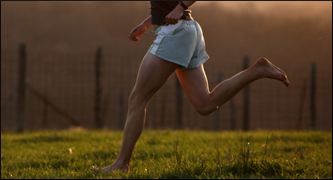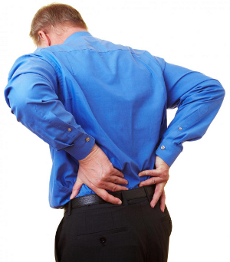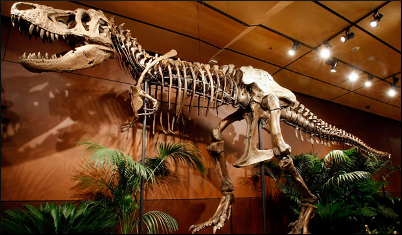Yesterday we went to Vienna for a day trip with the kids. They love it: wandering around the old inner city, visiting palaces and dreaming of fairy-tale princesses… Towards the end of the day we also spent a couple of hours at the Natural History Museum, so by the time it came to returning to the car for the return trip home, we’d spent a good six hours on our feet. It was then that my elder daughter started complaining: ‘My back hurts! I’m going to have sore muscles tomorrow!’
Ah, ‘museum back.’ We all know it. That achy, knotted feeling in the lower back: the symptom of too much culture, of standing for too long looking at paintings, sculptures or dinosaurs. Usually it’s combined with ‘museum feet’ as well…
For most of my life, I too have been susceptible to both of these conditions. However, my daughter’s remark made me realise how differently I felt now. Both my back and feet felt absolutely fine, still fresh, even at the end of the day. Pausing to think about it a little longer, it dawned on me that I’ve not suffered from museum back since taking up barefoot running.
How can this be? They say that running in general is good for building core and lower back strength. But during all the years I was running in shoes, I suffered from museum back and feet just like everyone else – and this despite putting in more miles than I do now as a barefoot runner.
The fact is that running barefoot forces you to hold a different, more upright posture compared to running in shoes. (This has to do with the shorter stride length and the implications of landing directly under your centre of gravity. See Form and Mechanics.) Instead of leaning forward as you do in shoes, almost falling into your stride, your lower back must work harder to hold you constantly erect through every footstep. Of course, over time this leads to building core strength.
When I think back over the past few years, it’s always been the same two muscle groups which get sore after barefoot runs: my calves and, as I’ve started to increase the length of my runs, my lower back. Especially in the beginning, my lower back would start aching during the latter part of longer runs. Now it’s more a question of feeling a little stiff afterwards: nothing which a simple standing stretch can’t remedy. I just bend over, leaning forward, letting my torso, arms, neck and head hang freely. Without any extra exertion, my natural body weight stretches out both the lower back and the hamstrings.
People often speak of yoga as a good method to build core strength and to remedy back problems. As a yoga teacher myself, I also agree to a certain degree. The problem with yoga, though, is that it tends to cause as many back injuries as it heals! Given the realization of our recent outing, it’s clear to me now that – without any doubt – barefoot running is the safest, most natural and efficient solution. If only we’d get out there and do what nature always intended us to do, we’d spend a lot less time and money on doctors’ visits and chiropractors.
 Every moment we spend on our feet, our core muscles constantly re-adjust and tweak our posture in order to maintain balance. It’s such a fundamental process to being a biped that, after learning to walk, it becomes totally automatic and we lose consciousness of it. As much as we don’t usually think of standing as a strenuous activity, though, it does begin to wear us out after a while – perhaps an hour or two – especially if we usually spend most of our time sitting in chairs with a back support. Propped up our whole life, our core muscles atrophy. As we grow older and begin to lose muscle tone and mass, the situation only deteriorates…
Every moment we spend on our feet, our core muscles constantly re-adjust and tweak our posture in order to maintain balance. It’s such a fundamental process to being a biped that, after learning to walk, it becomes totally automatic and we lose consciousness of it. As much as we don’t usually think of standing as a strenuous activity, though, it does begin to wear us out after a while – perhaps an hour or two – especially if we usually spend most of our time sitting in chairs with a back support. Propped up our whole life, our core muscles atrophy. As we grow older and begin to lose muscle tone and mass, the situation only deteriorates…
The same goes for our feet. If we spend most of our time in shoes, it’s our footwear which props up and supports our feet instead of the natural muscles in our arches, heels and ankles.
What you don’t use you lose.
Barefoot running posture, with its vertical upper body and stable centre of gravity, involves support from exactly the same muscle groups as those used in standing and walking – both of which likewise take place with the same stable, vertical stance. Given that every stride we take while running barefoot necessitates a more vigorous recalibration of our posture and balance than that during either standing or walking, it quite naturally builds strength in those very same core muscles.
So I say: bring on the culture and museums. My back and feet are ready for it!


